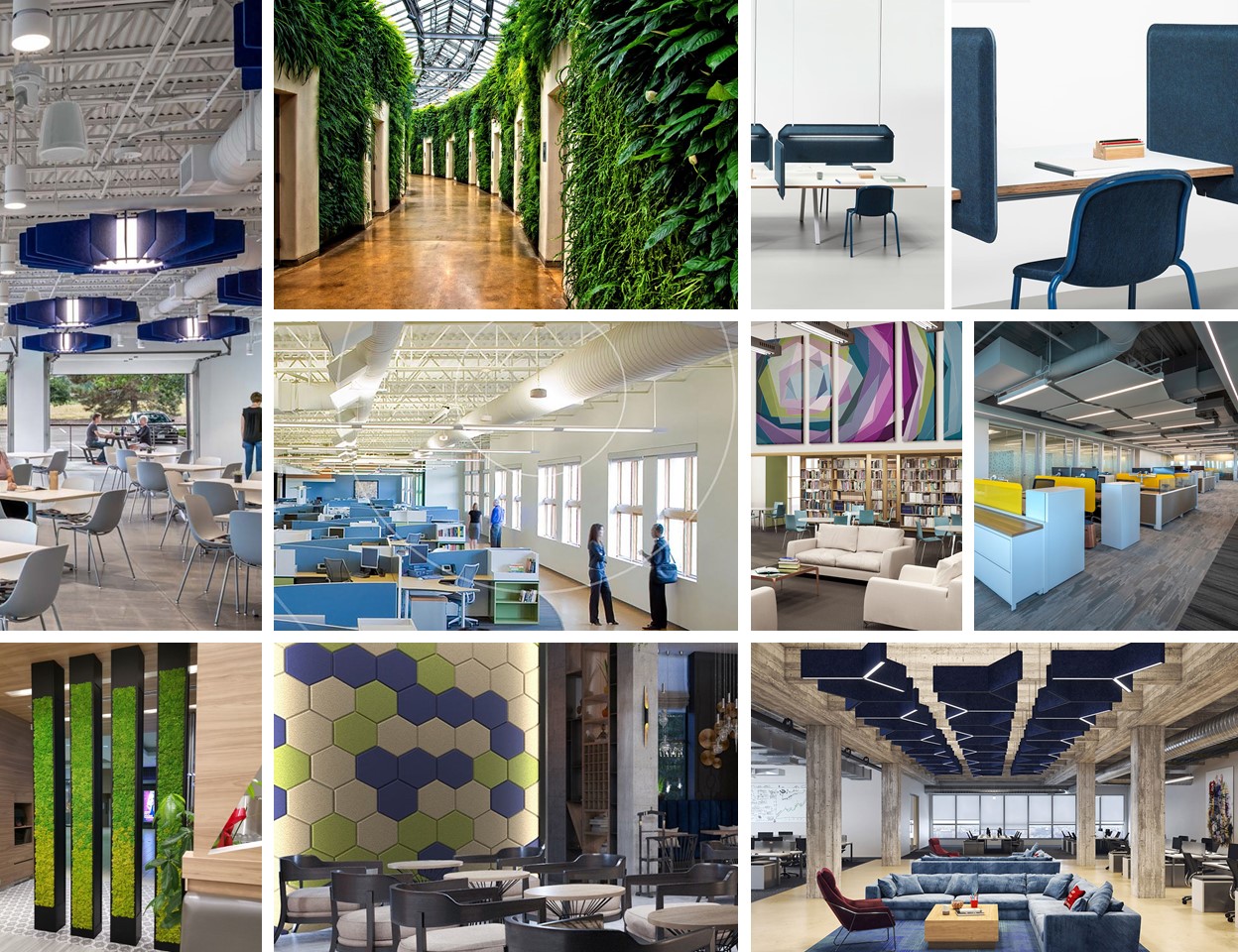May 30, 2024
Acoustic Options for Today’s Open Office – Summer 2024
Samantha Butcher, Senior Interior Designer at Arium AE, shares some of the top acoustic options to mitigate sound in today’s open office workspaces.
Open-plan offices are said to improve communication and collaboration while providing open, flexible work environments. In 2020, the New York Times reported that 70% of United States offices are configured as “open-plan” spaces. However, according to a Harvard Business Review article, a “lack of sound privacy was far and away the biggest drain on employee morale.” The volume of background noise has also resulted in office workers feeling they are 66% less productive. Some common contributors to office noise pollution are HVAC systems, cell phone ringtones, copiers, keyboard strokes, and co-worker’s conversations. Fortunately, there are ways to reduce the amount of noise in your open-plan office.
FLOORING
The most effective flooring to install to help reduce noise is carpet. Unlike hard surfaces, which reflect sound waves, carpets will absorb sound. The fibers of the carpet “trap” sound waves and prevent them from bouncing back. Carpet will also reduce the “impact” noise (the noise that occurs when two or more objects collide) from foot traffic, which is beneficial for any occupied spaces below. It has been proven that carpets can reduce airborne noise by 35%, with underlays adding another 50% to 70%. While it is true that a full floor of carpet is the best for acoustics, you can install carpet or area rugs in areas where they would be the most beneficial, like travel paths, conference rooms, and collaboration areas. Use the diversity of today’s carpet choices to create a visually appealing and quiet space for your next project.
SOUND MASKING
Sound masking is the “introduction of ambient sound to a space to ‘mask’ disruptive environmental noise.” Typically, sound masking can reduce the radius of distractions to 15 feet, meaning conversations more than 15 feet away become unintelligible. Sound masking is a good option for open offices because “zones,” like a busy collab area or a quiet cubicle hub, can be created. Thesystem can control the level of sound masking for each zone and can be modified as your zones change use. Sound masking is comprised of an entire system of components, so it’s best to work with a professional to ensure all your acoustical needs are met.
ACOUSTIC FELT “PANELS”
The ceiling is generally the largest surface area in a space, making it the most effective place to treat for acoustics. Acoustic Ceiling Tiles (ACTs) used in a drop-ceiling are the best and most cost-effective items to use for acoustics. However, with the popularity of today’s exposed ceiling trend, acoustical panels now come in many shapes, styles, forms, and sizes. In addition to the ceiling, acoustical felt can be applied to the walls, offering a wide variety of visual impacts. Acoustic felt is available in various colors, allowing branding to be incorporated; it can impersonate wood or be printed with digital images to look like art. Many lighting and furniture companies now produce acoustical felt items to serve a dual function that includes sound absorption.
BIOPHILIA
Biophilia seeks to connect building occupants more closely to nature. Many studies have shown how biophilic design enhances employees’ moods, but recently, acoustical benefits have come to the forefront. Green walls provide good acoustic absorption due to the plant’s natural unevenness and density. If you cannot install an entire green wall, consider planters with dense greenery, as this will provide a sound and visual partition. Much like sound masking, it has been proven that nature sounds, like a babbling stream or chirping birds, are preferred to filtered “white” or “pink” noise and can enhance focus, reduce stress, and improve overall wellness.
Arium AE offers a full-service, integrated design practice that balances sophisticated design and functional solutions. Our collaborative studio brings together architects, interior designers, electrical, mechanical, and plumbing engineers, and planning professionals. We would love to hear about your next project; contact us at info@ariumae.com.
